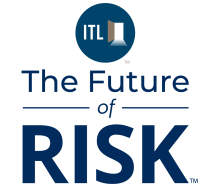An interesting conversation has been playing out online about whether the many efficiencies promised by generative AI can fix homeowners insurance, which has been barely profitable in the U.S. for more than a decade, even after investment income.
The short answer is no, not even if AI cuts personnel costs by 20%. Rate boosts will only provide limited benefit, too, given that homeowners already feel overcharged and that many regulators side with them, even as natural disasters increasingly imperil all of us.
But the long answer is interesting. It points to other areas, notably preventing damage from water and fire, where homeowners insurers could take huge chunks out of their expenses.
Let's have a look, based on one of our friend Matteo Carbone's famous deep dives into the numbers.
The online conversation began with a lament that, while technology has made so many industries more efficient, expenses for homeowners insurers have held steady at around a hefty 30% of premiums. Commenters offered some justifications, based on high customer acquisition costs and on the complexity of insurance vs. other industries -- seat 17A is identical to seat 18A, but my homeowners policy is likely quite different from yours.
Matteo then weighed in with a long post. I encourage you to read the whole piece, but I'll summarize here.
He shows that homeowners insurers in the U.S. had an underwriting loss of 1.6% during the decade that ended in 2023. In other words, claims plus expenses exceeded the amount of premiums collected. After the income from the investment of those premiums, the industry produced a profit of 0.7%. Not great.
Cutting expenses would seem to be an obvious way to improve profitability, and Gen AI promises enormous gains in profitability. Reducing head count could result -- even though just about every company in every industry says they are trying to help employees, not replace them with AI.
But Matteo calculates that personnel only account for maybe nine percentages points of the roughly 30% of premiums that go to pay overhead expenses. So even a 20% reduction in headcount -- an optimistic assumption that almost no insurer would voice -- would barely erase that 1.6% underwriting loss.
That's the bad news. The good news is that Matteo didn't stop there. He kept digging into the numbers and identified "15 points on the combined ratio that can be addressed with fire protection solutions and 21 points that can be addressed with water escape prevention solutions."
Based on his work running the IOT Insurance Observatory, he singled out Whisker Labs for its work on fire prevention and Ondo for its innovations in preventing water leaks.
I wholeheartedly agree with his thrust.
Whisker Labs has become the poster child for the Predict & Prevent focus at ITL and at our parent organization, The Institutes. It provides a device called a Ting that you simply plug into a wall socket, and it detects anomalies in the flow of electricity that indicate a fire danger, so the problem can be fixed before a problem can occur. The Ting has proved to be so effective that dozens of insurers are providing it to customers for free. It is in more than 1 million homes in the U.S. and has prevented thousands of fires.
We've covered Whisker Labs at some length, beginning with this conversation I had with CEO Rob Marshall in 2023. He updated us on his progress with an article last month, while providing advice on how to correct policyholders' misconceptions about electrical fires.
As for Ondo, Matteo provides the transcript of a long interview with the CEO, in which he says some insurers have reduced their claims related to water escape damage by 70%.
I'll do the math for you: A 70% reduction in 21% (the amount of premiums that Matteo says go toward covering water escape damage claims) would be nearly a 15-point improvement in the combined ratio. Suddenly, homeowners insurance could be very profitable at current rates.
I'm not saying by any means that we're there yet. Water sensors are at an earlier stage than Ting's fire-detection technology. But I'm encouraged by the breadth of innovation on water sensors and on the highly promising -- if early -- results. For instance, for this month's ITL Focus, on the IOT, I interviewed an executive at bolt, who said their pilot had demonstrated "a significant reduction in losses, with up to 55% total premium impact. More than 40% of that comes from avoided loss events, and the remainder is driven by reduced severity, which can be as much as 28%."
As I said in my commentary for ITL Focus, we may be reaching a tipping point with water sensors, based on the results being delivered by Ondo, bolt, and others. We may be at the point where lots of insurers will give away sensors, knowing they'll be reducing claims (while delighting customers). And "free" is a magic word. Once we get to "free," deployment will really take off.
We shouldn't give up on AI, of course. Every bit of efficiency matters, but I agree with Matteo that the big gains for homeowners insurers lie elsewhere.
Cheers,
Paul


